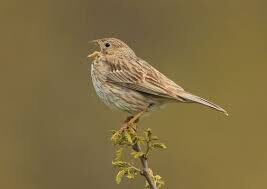Six (or nearly so) big challenges for farmland bird conservation in Italy
Mattia Brambilla
Abstract:
Italy harbours a large proportion of the breeding populations of several threatened or declining farmland species, but has been under-represented for a long time in studies about ecology and conservation of farmland birds. In the last two decades, several studies have partially filled the gap, providing key knowledge for their conservation; however, the practical implementation of conservation strategies had been very limited, and many aspects still require research. I analyse the status of farmland birds in Italy, identify main issues for their conservation, and propose directions for effective conservation strategies. Species tied to grassland-like habitats (hay meadow, montane grassland, pasture, pseudosteppe) currently have the most concerning conservation status, followed by species occupying agricultural mosaics and shrubland; only generalist species are performing better and include many species with favourable conservation status. Several factors/pressures negatively affect breeding farmland birds in Italy. Main threats could be tentatively assigned to six “challenges”: agricultural intensification, land abandonment, pest management, low breeding success, difficult practical implementation of conservation measures, within-season shift in distribution and habitat by breeding species. They are interconnected by means of direct effects or by acting on the same ultimate drivers of population dynamics. Such challenges mostly act at two levels: the landscape scale, and the field management level. For each one, I summarise available evidence from studies carried out in Italy, discuss conservation implications and their current/possible implementations, and highlight main needs in terms of future research. In general, key issues for conservation are: planning measures at the right scales; conserving, restoring and correctly managing grassland; conserving/enhancing ‘marginal’ features and heterogeneity; correctly managing ground vegetation in perennial crops; facing the ‘nest crisis’; considering the temporally different suitability and the connectivity among patches; evaluating the economic outcomes and the broader benefits of different conservation strategies. Implementation of measures for farmland birds requires multi-faceted efforts, targeted at different stakeholders; a focus also on the ecosystem services arising from a biodiversity-friendly management could provide a broader support for conservation initiatives. Now it is time to intensively cooperate with practitioners (farmers at first) to translate into management protocols and appealing agri-environmental schemes the conservation implications of research carried out in the last decades.
